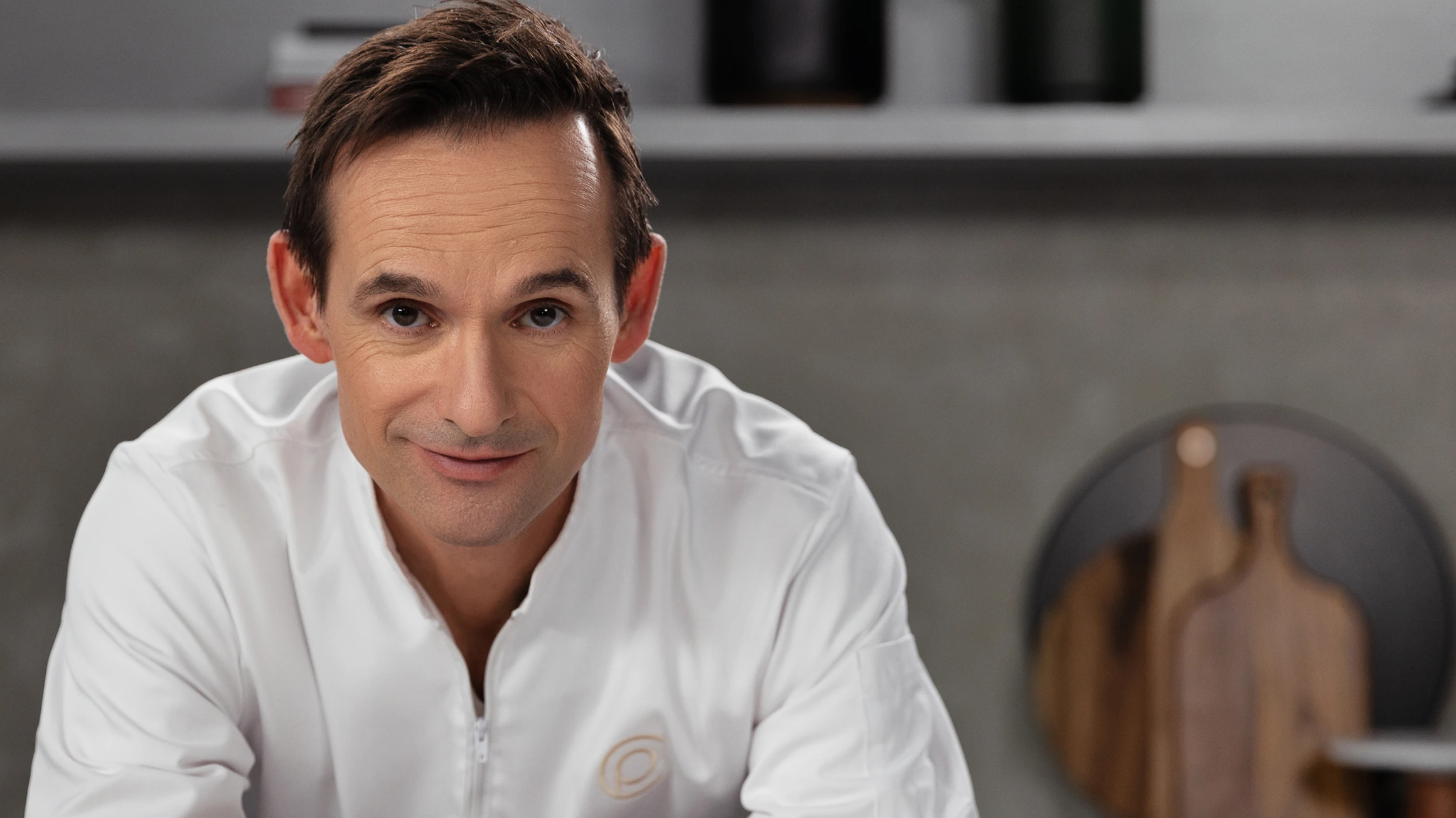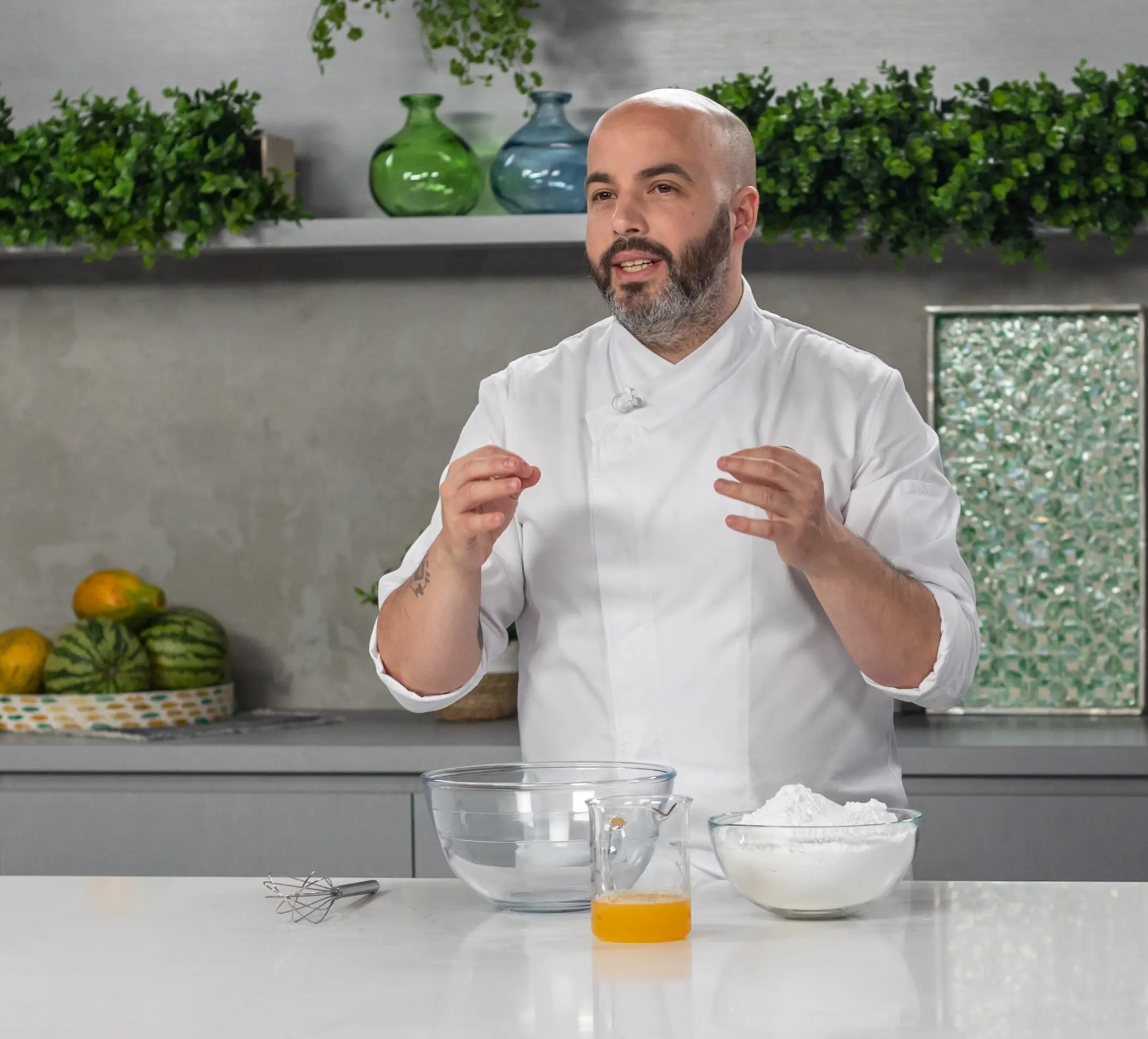Try New Flavor Combinations
- Think Beyond the Basics: Don’t limit yourself to familiar flavors. Experiment with new pairings to add a twist to your desserts.
- Be Bold: Mixing unexpected flavors can lead to interesting and delicious results.
Example: Pair earthy matcha with sweet raspberry, or blend yuzu’s citrusy flavor with creamy white chocolate to create something unique.
Add Texture Variety
- Play with Textures: Combining different textures in one dessert can make it more interesting to eat.
- Consider the Experience: Think about how to add crunch, smoothness, or lightness to each bite.
Example: Add a crispy tuile to a soft mousse or mix a crunchy praline into a fluffy sponge cake to surprise your guests.
Use Nature as Inspiration
- Look Around You: Nature provides endless inspiration. Pay attention to the shapes, colors, and patterns of fruits, flowers, and landscapes.
- Emulate Natural Beauty: Use nature to spark new ideas for your desserts.
Example: Chef Cédric Grolet transforms fruits like lemons and peaches into realistic-looking desserts, making them visually stunning while still delicious.
Choose Seasonal Ingredients
- Stay Fresh: Using seasonal ingredients not only ensures the best flavor but also keeps your menu changing throughout the year.
- Keep it Interesting: Incorporate fresh, in-season produce to keep your creations new and exciting.
Example: In the spring, use strawberries and rhubarb. In the fall, try pumpkin, chestnuts, or apples for a seasonal twist.
Reinvent Classic Desserts
- Think Outside the Box: Put a new spin on classic desserts by changing up ingredients, presentation, or technique.
- Refresh the Familiar: This can make a well-known pastry feel fresh and modern.
Example: Chef Christophe Adam reinvented the classic éclair with creative fillings, toppings, and shapes, turning a traditional dessert into something exciting.
Incorporate Global Flavors
- Explore New Horizons: Incorporate global flavors into your pastries to add a fresh perspective.
- Be Adventurous: Explore different cuisines and bring in new ingredients from around the world.
Example: Use matcha or yuzu for a Japanese-inspired dessert, or blend rose water and pistachios for a Middle Eastern twist.
Focus on Presentation
- Make it Beautiful: How your dessert looks is just as important as how it tastes.
- Small Details Matter: Take time to think about presentation—small details like garnish and plating can make a big impact.
Example: Chef Joakim Prat uses minimalistic plating, focusing on clean lines and small touches like edible flowers or gold leaf to enhance the visual appeal.
Collaborate with Others
- Share Ideas: Working with other bakers or chefs can help you see your work from a new angle.
- Learn from Each Other: Sharing ideas and learning from others can inspire new creations.
Example: Many top chefs collaborate with chocolatiers, artists, or other professionals to blend their ideas and create innovative desserts.
Try New Techniques
- Keep Learning: Learning new pastry techniques can open up new creative possibilities.
- Stay Curious: New methods can lead to fresh ideas and exciting creations.
Example: Chef Frank Haasnoot uses advanced techniques like 3D printing molds to create visually impressive and unique desserts.
Learn from Mistakes
- Embrace the Unexpected: Not every experiment will work out, and that’s okay. Mistakes can lead to new discoveries.
- Find Opportunities in Errors: Sometimes, mistakes spark creativity in unexpected ways.
Example: Pierre Hermé’s famous Ispahan macaron (a combination of rose, lychee, and raspberry) was created by accident during flavor experiments.
Creativity in the kitchen is about trying new things, learning from mistakes, and staying curious. By experimenting with flavors, techniques, and presentation, you can keep your pastry creations fresh and exciting.
August 15, 2024 By PastryClass




























